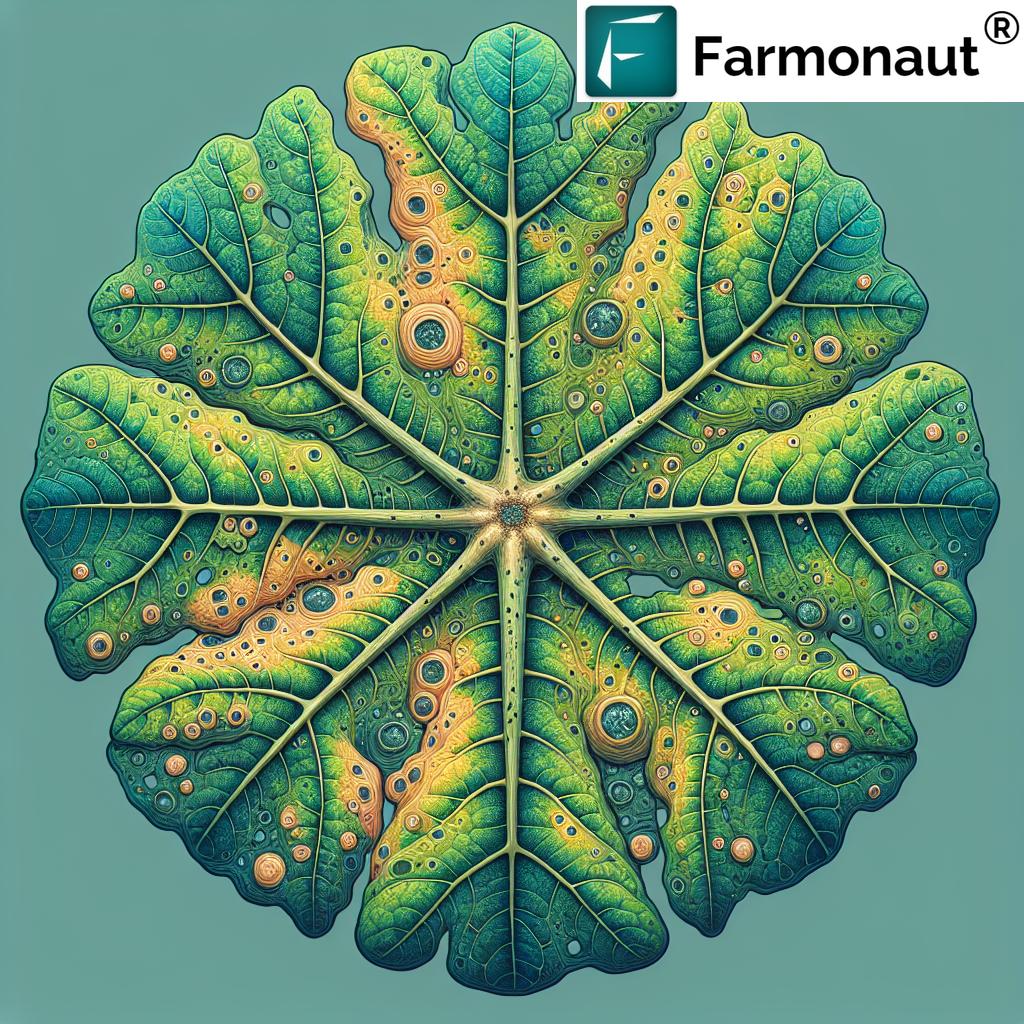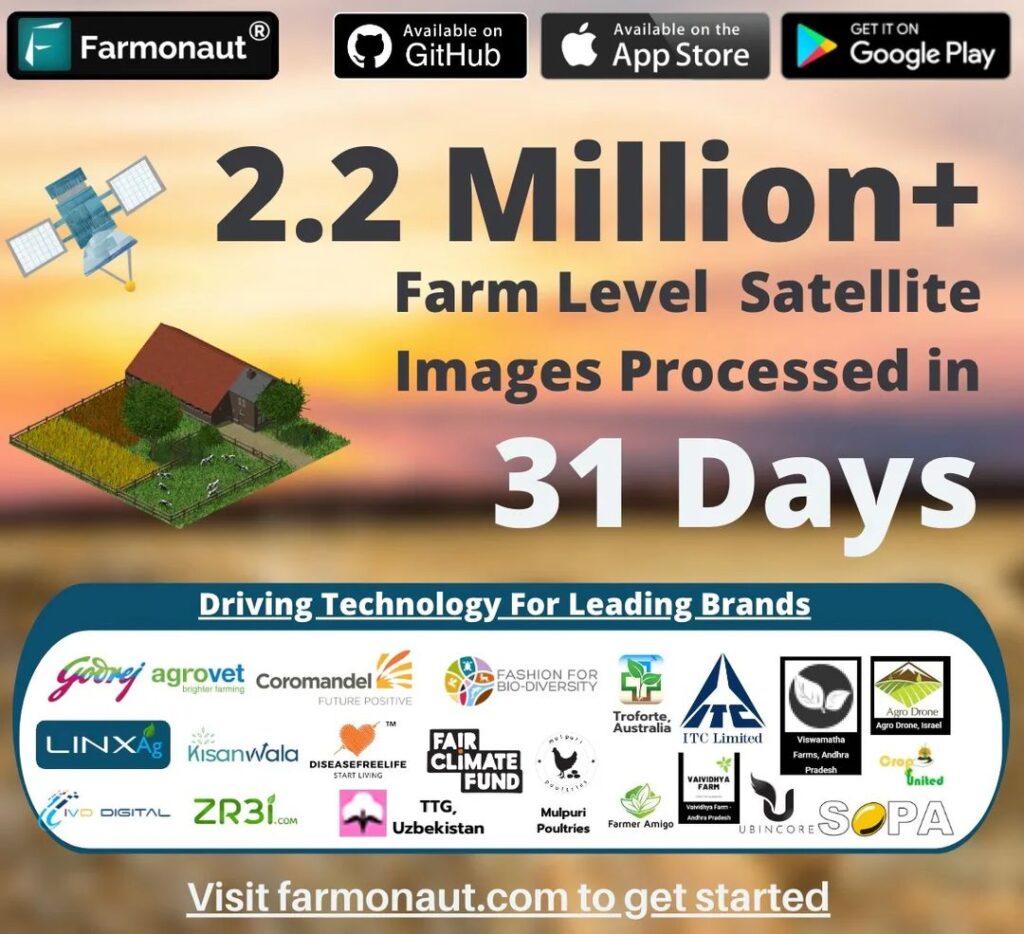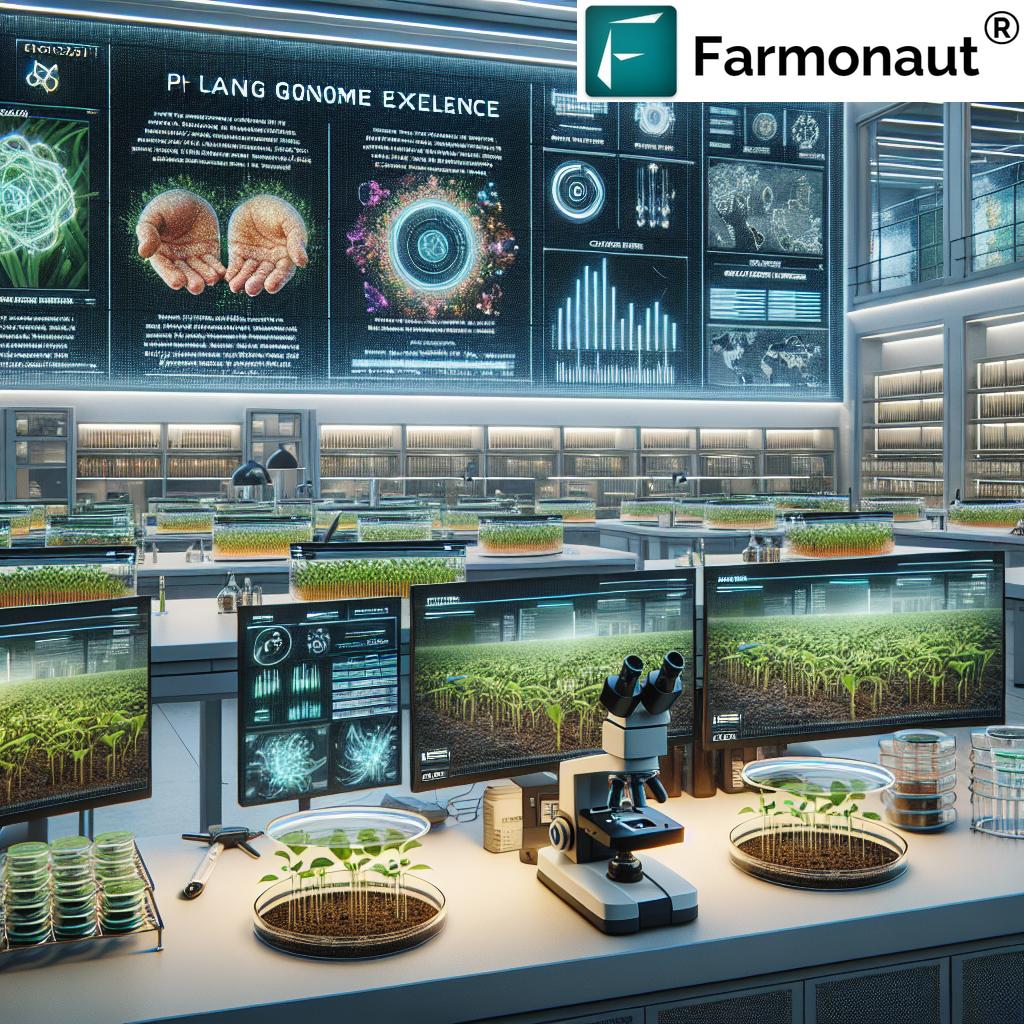Table of Contents
- Introduction: Aphid in Plants & Why Sustainable Control Matters
- Quick Trivia: Aphid Predators
- Understanding Aphid Predators & Their Role
- Top Aphid Predator Larvae & Aphids Predators in Plants
- The Impact of Aphid Predators in Sustainable Agriculture & Forestry
- Comparison Table of Major Aphid Predators
- Strategies for Fostering Aphid Predator Populations
- Featured Solutions & Resources for Pest Management
- Satellite Tech & Farmonaut for Sustainable Pest Control
- FAQ: Aphid Predators, Larvae & Pest Management
- Conclusion: Aphid Predators—Natural Allies for 2025 and Beyond
Top Aphid Predator Larvae & Aphids Predators in Plants
Aphid Predators: Natural Allies in Sustainable Agriculture and Forestry Management
Aphid predator, aphids predators, and aphid predator larvae play a critical role in controlling the pervasive pest—the aphid—across agricultural, forestry, and horticultural sectors. Globally, aphids such as the infamous black bean aphid (Aphis fabae) damage crops and plantations by extracting essential nutrients from plants, leading to stunted growth, diminished yields, and the spread of plant viruses. As we move into 2025 and beyond, rising concerns about overuse of chemical pesticides have elevated the importance of biological and sustainable pest management, with a focus on natural enemies like lady beetle and lacewing larvae.
“Lady beetle larvae can consume up to 50 aphids per day, significantly reducing pest populations in sustainable agriculture.”
This comprehensive guide will help you discover how aphids predators, particularly predator larvae, naturally regulate aphid in plants, supporting sustainable agriculture and forestry management for healthier crops and productive ecosystems.
Focus Keyword: aphid predator, aphids predators, aphid predator larvae, black bean aphid predators, aphid in plants
Understanding Aphid Predators and Their Role in Control of Aphid in Plants
Aphid in plants are notorious for their rapid reproduction and their tendency to form dense colonies. They directly impact plant health by extracting essential nutrients, which can result in reduced plant vigor, stunted growth, and diminished yields. Additionally, aphids act as vectors for numerous viruses, further exacerbating the threat to crops.
Aphid predator species are natural enemies of aphids. These include lady beetles (Family: Coccinellidae), lacewings (Family: Chrysopidae), hoverfly larvae (Family: Syrphidae), and certain parasitic wasps (Aphidiinae). They actively hunt and consume aphids, thus regulating populations across ecosystems. Of these, aphid predator larvae—such as those of lady beetles and lacewings—are among the most voracious feeders, capable of drastically reducing infestations in a relatively short time. Their effectiveness in biological pest management systems makes them cornerstones of integrated pest management (IPM) strategies for farming, horticulture, and forestry.
- Aphid predators directly reduce aphid numbers, thereby mitigating crop damage.
- Predator larvae are generally more voracious than adults, especially in their early instars.
- Natural pest regulation by these predators supports sustainable and environmentally-friendly agricultural practices.
Their presence is particularly valuable in 2025’s landscape, with increasing demand for residue-free produce and sustainable production systems.
Top Aphid Predator Larvae & Aphids Predators in Plants: Species Overview
The diversity and efficiency of aphid predators are essential for biological pest control. Let’s examine the major groups of aphid in plants natural enemies and understand how they help suppress outbreaks:
1. Lady Beetles (Coccinellidae)
- Larae (commonly called ladybug larvae)—the most voracious aphid predators; they hunt and consume aphids at all life stages.
- Common species for black bean aphid predators: Coccinella septempunctata (seven-spot ladybird), Hippodamia convergens (convergent lady beetle).
- Adult ladybirds also feed on aphids, but larvae are particularly efficient.
- Widely found across agricultural fields, forestry plantations, and home gardens.
- Impact: High, due to rapid prey consumption and frequent reproduction.
2. Green Lacewings (Chrysopidae)
- Lacewing larvae—sometimes called “aphid lions”—are especially effective at controlling aphid in plants infestations.
- Larvae have strong, sickle-shaped jaws which grab and suck body fluids from aphids.
- Common in fields, orchards, and wooded edges, playing a role in both crop and forestry pest management.
- Impact: High to Medium, as larvae can decimate aphid colonies overnight.
3. Hoverfly Larvae (Syrphidae)
- Hoverfly larvae are aggressive aphid feeders—a single larva can consume hundreds of aphids before pupation.
- Adult hoverflies feed on nectar and support predator larvae by frequenting flowering plant strips.
- Found in diverse farming landscapes and forest margins, especially where flowers are present.
- Impact: Medium to High, depending on local populations.
4. Parasitic Wasps (Aphidiinae)
- Specialized wasps like Aphidius colemani lay eggs inside aphids. The developing wasp larvae kill aphids from within.
- A single female can infect dozens of aphids, placing multiple eggs throughout an aphid colony.
- Present in nearly all climates and ecosystems—an integral part of integrated pest management.
- Impact: Medium, but extremely valuable for long-term, landscape-level suppression.
5. Other Aphid Predators & Insect Allies
- Syrphidae and Cecidomyiidae (gall midge larvae)—lesser-known but effective in organic fields and low-input systems.
- Predatory bugs, e.g., Nabis spp., flower bugs (Orius spp.)
- Spiders, earwigs, and some ants—while not specialized, they do contribute to aphid reduction, especially in forest ecosystems.
The Impact of Aphid Predators in Sustainable Agriculture & Forestry
Aphids predators in plants and forestry exert multiple direct and indirect benefits:
- Prevention of Outbreaks: By suppressing aphid populations before they reach economic thresholds, natural enemies mitigate loss.
- Reduced Reliance on Chemical Pesticides: Sustainable pest management is achieved through natural control agents, reducing the chemical and environmental footprint.
- Enhanced Crop Health: Less aphid damage means improved growth, vigor, and yields for crops, orchards, and forest saplings.
- Greater Ecosystem Resilience: Aphid predator diversity contributes to overall biodiversity, stabilizing agroecosystem dynamics.
- Long-Term Solutions: With climate change likely to alter pest dynamics, fostering natural pest control will be critical for sustaining productivity into 2025 and beyond.
The importance of integrating aphid predators into IPM systems has gained increasing attention as a cornerstone of sustainable agriculture and forestry management.
Comparison Table of Major Aphid Predators and Their Effectiveness in Sustainable Pest Management
Key Strategies for Fostering Aphid Predator Populations for Sustainable Pest Management
Conservation and augmentation of aphid predator populations are necessary to maximize sustainable pest control across crops, forests, and plantations in 2025 and beyond. Here are essential practices for integrated management:
-
Habitat Diversification
Promote strips of flowering plants, hedgerows, and cover crops—they supply food (nectar/pollen) for adult predators and refuges for larvae, ensuring year-round biological control. -
Reduced and Targeted Pesticide Use
When chemical control becomes necessary, use selective insecticides with minimal impact on beneficials. Adopt threshold-based interventions to minimize risks to predator populations. -
Augmentative Biological Control
In areas with insufficient natural enemies, release commercially reared aphid predator larvae (e.g., lady beetle, lacewing, hoverfly) to restore balance rapidly. -
Monitoring and Integrated Response
Scout for aphid and aphid predator presence frequently. Employ action thresholds to decide when intervention is warranted, preventing unnecessary treatments. -
Farmer and Forester Education
Train stakeholders to recognize aphid predators and understand their role in sustainable systems. This enhances adoption of ecologically focused IPM strategies.
Together, these approaches actively foster a resilient ecosystem—one that naturally suppresses aphid outbreaks while enhancing productivity and sustainability.
Featured Solutions & Resources for Pest Management and Monitoring
As aphid predators continue to play a pivotal role in sustainable pest management, technology-based solutions are increasingly essential. For advanced crop and plantation monitoring, yield optimization, and forecasting aphid outbreaks, the integration of satellite technology is transforming the field.
Track and Monitor Crop Health & Pest Outbreaks with Satellite-Based Tools:
- Farmonaut provides real-time satellite-based crop monitoring solutions that enable farmers, businesses, and governments to monitor vegetation health, detect early pest outbreaks, and assess field stressors efficiently. You can access these insights through their web, Android, and iOS apps:
-
For those developing custom solutions or integrating monitoring into automated farm management or research systems, Farmonaut’s robust
satellite weather and agricultural API and
developer documentation offer direct data access for scalable applications. - Tracking your crop’s carbon footprint and quantifying sustainability? Farmonaut Carbon Footprinting provides science-based, actionable metrics—supporting regenerative agriculture and market access for eco-conscious producers.
- Would traceability strengthen your market trust? The Farmonaut Traceability module leverages blockchain to secure product journeys from field to fork, ensuring supply chain transparency for crops, plantation products, and forestry yields.
-
Crop Loan & Insurance
—Farmonaut’s unique verification tools let lenders and insurers de-risk agriculture by utilizing satellite-verified field assessments. This enables small farmers to access financing with ease. - For large-scale farm, plantation, and forest management, Farmonaut’s Agro Admin App centralizes data, optimizes inputs, and improves decision-making—facilitating an integrated vision for sustainable food and timber production in the era of climate-smart agriculture.
Satellite Tech & Farmonaut: Enhanced Pest Management for 2025 and Beyond
As the world faces increasing pest outbreaks and more complex crop threats, harnessing advanced satellite technology alongside biological control grows ever more crucial.
At Farmonaut, we make satellite-driven insights affordable and accessible to all stakeholders—from small farmers to enterprise-scale operations and governments worldwide.
- Our satellite monitoring uses multispectral imagery to track vegetation health, detect pest stress, and identify outbreaks of aphid in plants—providing real-time alerts.
- With AI-powered analytics, users receive customized advisories for pest management, enabling timely interventions for keeping aphid numbers under control.
- Our blockchain-powered product traceability tools give confidence to markets and regulators demanding proof of sustainable practices and residue-free supply chains.
- Environmental impact monitoring and carbon footprint tracking help organizations meet global requirements for sustainability within agriculture and forestry.
- With scalable implementation via API or in-app tools, every farm, co-operative, forest plantation, or research institution can harness technology for science-backed, ecological pest control.
By integrating satellite data and supporting natural aphid predator populations, we help ensure that agriculture and forestry remain productive, sustainable, and ecologically sound.
Frequently Asked Questions About Aphid Predators & Pest Management
1. What are the most effective aphid predators for sustainable agriculture in 2025?
The best aphid predators include lady beetle larvae (Coccinellidae), lacewing larvae (Chrysopidae), hoverfly larvae (Syrphidae), and certain parasitic wasps (Aphidiinae). They reduce aphid in plants efficiently and support biological management systems that reduce chemical dependency.
2. How do aphid predator larvae control aphid outbreaks?
Aphid predator larvae are voracious feeders that hunt and consume aphids rapidly, targeting all aphid life stages. A single lady beetle or lacewing larva can eat dozens of aphids each day, drastically lowering infestation levels and providing vital pest control in both crops and forests.
3. Can aphid predators replace chemical pesticides completely?
While predators significantly reduce the need for chemical applications, total replacement depends on crop type, pest pressure, and overall ecosystem health. Integrating biological control with selective pesticide use and robust monitoring (like that provided by satellite tools) maximizes sustainability and output.
4. How can farmers increase aphid predator populations naturally?
Key strategies include planting flowering cover crops/habitat strips, reducing broad-spectrum insecticide use, increasing landscape diversity, and considering the release of commercially reared predator larvae where necessary.
5. Are aphid predators important for forestry plantations as well?
Absolutely. Aphid predators protect young saplings and mature trees from aphid-induced stress, supporting sustainable timber production and forest health while limiting the spread of pests and secondary infections across forestry plantations.
6. What role does technology, such as satellite monitoring, play in aphid and pest management?
Satellite monitoring, as offered by Farmonaut, tracks vegetation stress, early pest outbreaks, and management outcomes on a landscape scale. It provides actionable data-driven insights for farmers, researchers, and policymakers to optimize pest control with sustainability in mind.
7. Where can I learn more about integrating technology with biological pest control?
Visit the Farmonaut Crop, Plantation, and Forestry Advisory portal for detailed guides and sign up for real-time insights using their web and mobile platforms.
Conclusion: Aphid Predators—Our Natural Allies in Agriculture and Forestry for 2025 and Beyond
The future of sustainable pest management lies in balancing cutting-edge technological innovation with nature’s innate resilience. Aphid predators—especially aphid predator larvae like those of lady beetles, lacewings, and hoverflies—are fundamental allies, efficiently reducing aphid in plants and preserving ecosystem health. By fostering predator populations, adopting ecological strategies, and integrating satellite-enabled monitoring (such as via Farmonaut), agriculture, horticulture, and forestry sectors worldwide can transition toward a more resilient and productive 2025—with robust yields, protected landscapes, and a reduced environmental footprint.
Empower your farm or forest with the synergy of nature and technology—choosing aphid predators as natural allies and leveraging precision tools for monitoring and decision-making.
Unlock precision monitoring and sustainable pest management with Farmonaut—where natural control meets advanced technology for a healthy, productive future.












